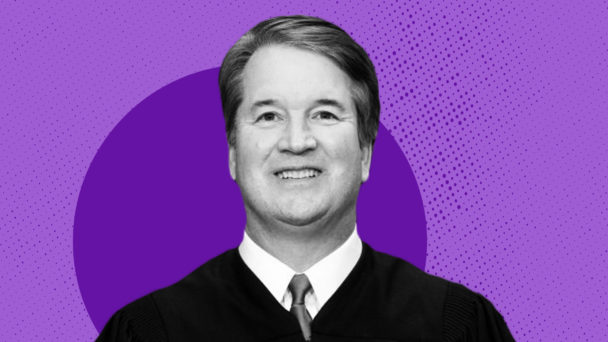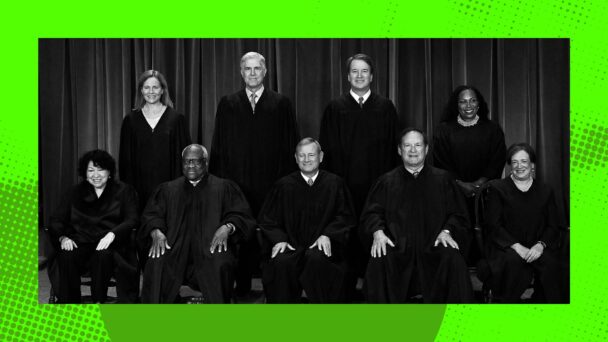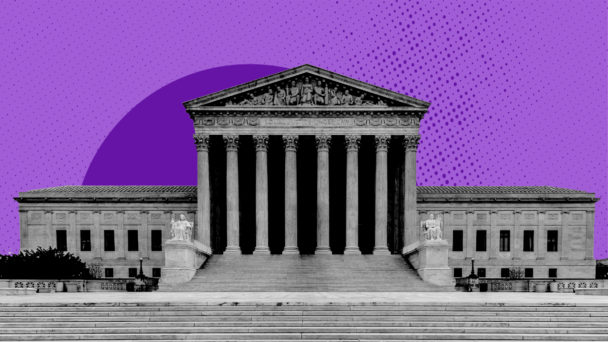On Monday, the Supreme Court granted President Donald Trump’s request that he be allowed to fire Rebecca Slaughter from the Federal Trade Commission without cause, despite the existence of a federal law that explicitly prohibits him from doing so. The Court also announced that it would add Trump v. Slaughter, a case about whether Trump can ignore a century-old Supreme Court precedent if he feels like doing so, to its docket this upcoming term. Oral argument will take place in December, which should allow the conservative justices to fulfill their favorite president’s latest demand for extralegal power shortly thereafter.
At least in theory, Trump’s termination of Slaughter violates both the Federal Trade Commission Act of 1914 and also Humphrey’s Executor v. United States, a 1935 Supreme Court case that upheld it. In order to safeguard the agency’s independence—and to keep its focus on the economic interests of the public, not just the president—Congress established in the FTC Act that commissioners like Slaughter would serve seven-year terms, and that presidents could only fire them for “inefficiency, neglect of duty, or malfeasance in office.”
In 1933, President Franklin D. Roosevelt fired FTC commissioner William Humphrey anyway. Humphrey sued, and the White House argued that the removal protections unconstitutionally interfered with the executive power of the president. But the Supreme Court did not agree: In Humphrey’s Executor, the Court unanimously upheld the tenure protections, and found it “plain under the Constitution that illimitable power of removal is not possessed by the President.”
Nearly 100 years later, Slaughter should be a case of judicial déjà vu. Slaughter was fired without cause from her position as an FTC commissioner, like the plaintiff in Humphrey’s Executor. The president who fired her claimed that for-cause removal restrictions unconstitutionally interfered with his power, like the defendant in Humphrey’s Executor. So, each of the lower courts to consider the issue ruled against the president, like the Supreme Court in Humphrey’s Executor.
“Unless the Supreme Court expressly overrules Humphrey’s Executor, this court will not usurp the Supreme Court’s prerogative to overrule one of its own precedents,” wrote federal district court Judge Loren AliKhan in June. She concluded that the removal protections “remain constitutional, as they have for almost a century.” A panel of the D.C. Circuit Court of Appeals later declined the White House’s request to block AliKhan’s ruling, explaining that it would not “defy binding, on-point, and repeatedly preserved Supreme Court precedent.”
This, apparently, was a mistake: Earlier this month, the Court stepped in and stayed AliKhan’s ruling in a two-sentence order. Its decision to grant certiorari in the case provides a little more clarity about where the Court is headed: The order directs the parties to file briefs about whether the FTC Act’s removal protections “violate the separation of powers,” and, if so, whether Humphrey’s Executor “should be overruled.” Given that the conservative legal movement has been chipping away at the edges of Humphrey’s Executor for decades—and that the conservative justices have already blessed Trump’s ability to fire multiple independent agency heads who enjoy similar protections—it is not especially difficult to guess how this Court’s conservative supermajority will finally, formally dispose of it.
In a dissent joined by Justices Sonia Sotomayor and Ketanji Brown Jackson, Justice Elena Kagan took aim at the majority for once again bending over backwards to exempt Trump from following the law. Even if the majority is “raring” to overturn Humphrey’s Executor, Kagan wrote, Humphrey’s should at least prevent Trump from firing Slaughter “until the deed is done.” The conservative justices’ decision to treat the case as already overruled demonstrates that they do not view the Trump administration as bound by law, and are willing to exercise their power to dispense with the usual process for changing it.
“The majority, stay order by stay order, has handed full control of all those agencies to the President,” Kagan wrote. “Our emergency docket should never be used, as it has been this year, to permit what our own precedent bars.”
In more and more decisions, the Supreme Court is overruling judges who are literally just applying the law as it is written, and has long been interpreted; Justices Neil Gorsuch and Brett Kavanaugh are even scolding judges for failing to anticipate which precedent the Court will stuff in the garbage next. The justices’ handling of Slaughter is again telling lower court judges not to do as the Court has said, but to do what everyone knows the Court wants to say. And increasingly, what the Court wants to say is, “Whatever Trump wants goes.”






